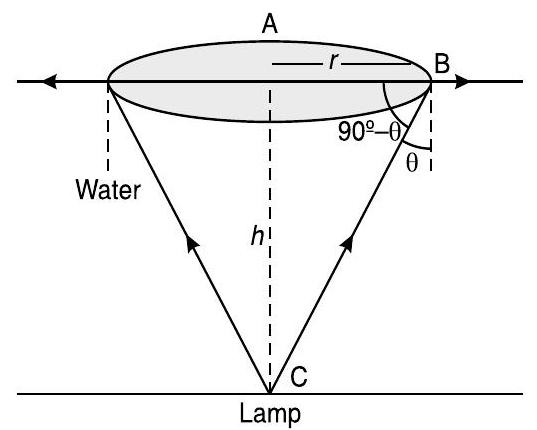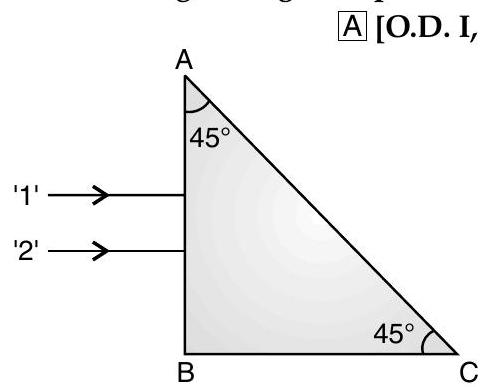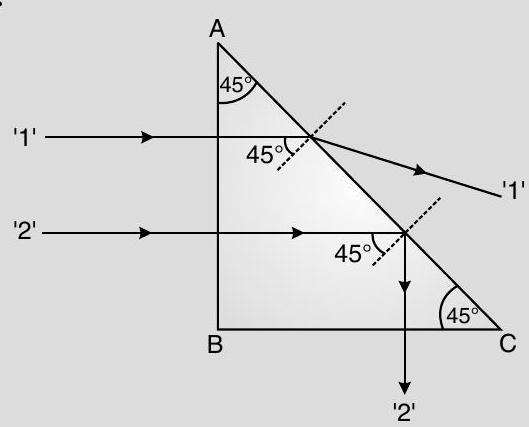Question: Q. 7. A small bulb (assumed to be a point source) is placed at the bottom of a tank containing water to a depth of
Show Answer
Solution:
Ans. Actual depth of the bulb in water,
Refractive index of water,

Where, Angle of incidence
Angle of refraction
Since the bulb is a point source, the emergent light can be considered as a circle of radius
From the figure

Area of the surface of water through light emerge
Hence, the area of the surface of water through which the light from the bulb can emerge is approximately
1
[A] Q. 8. Two monochromatic rays of light are incident normally on the face

Ans.

[CBSE Marking Scheme 2014]






